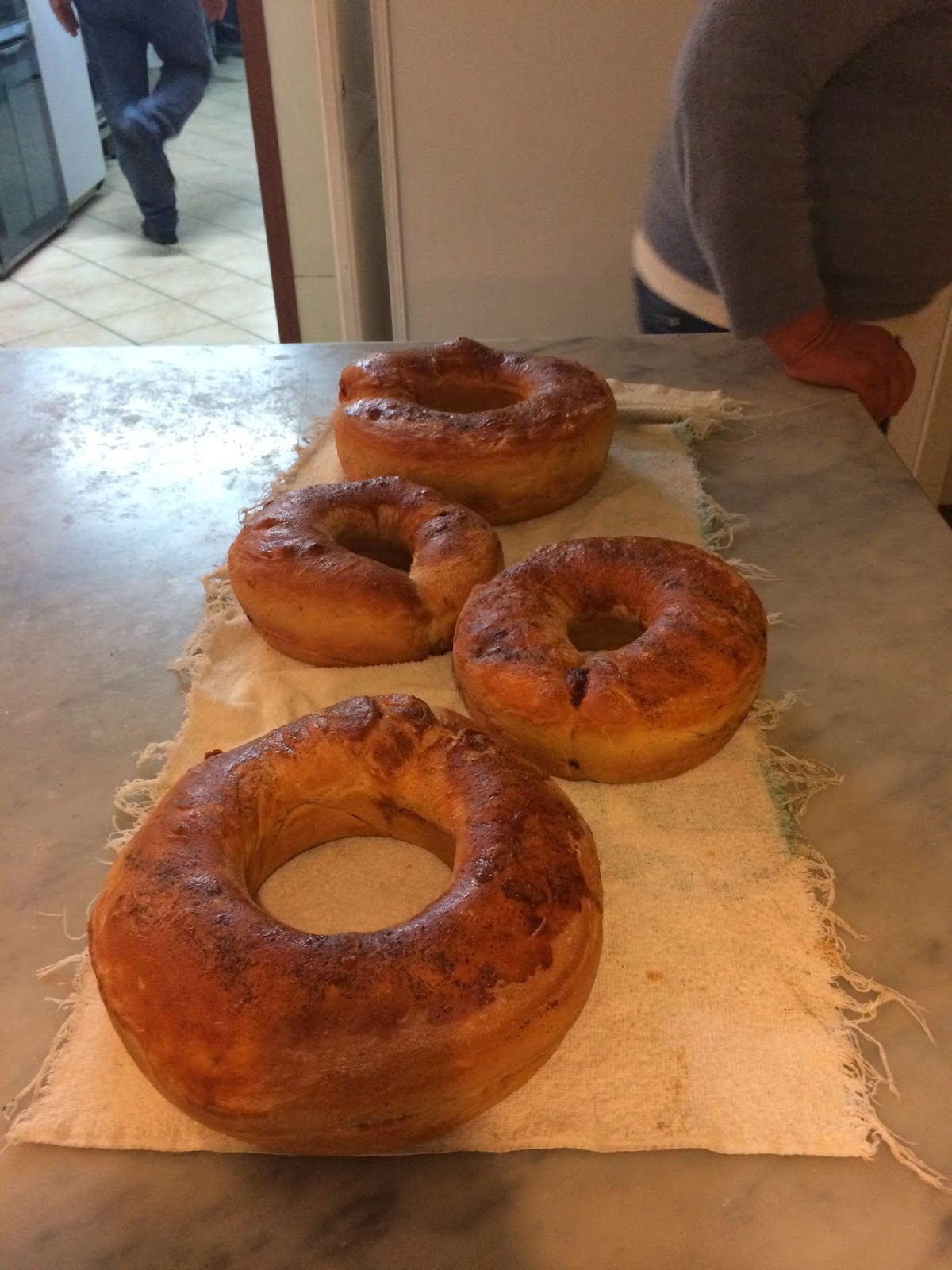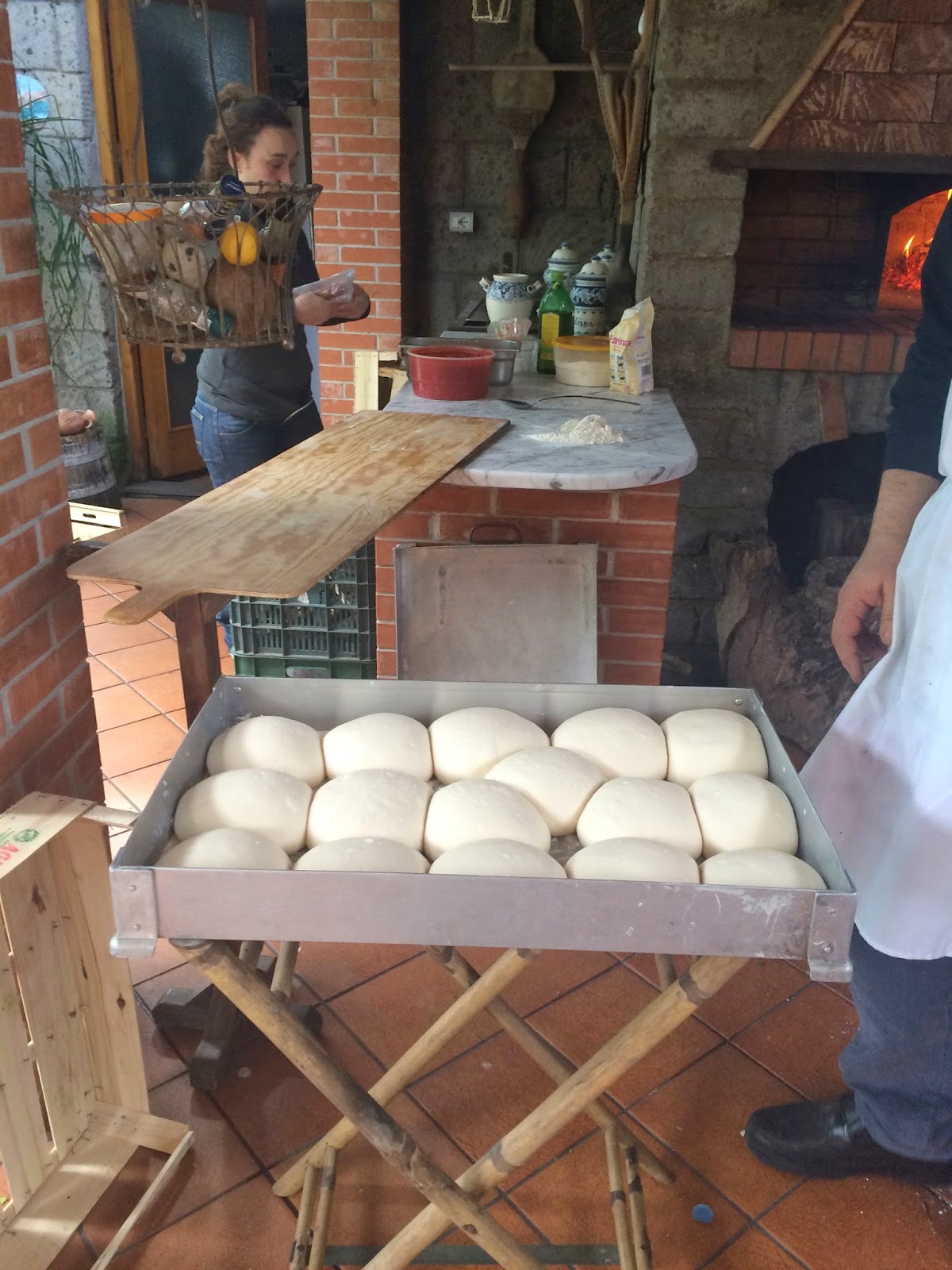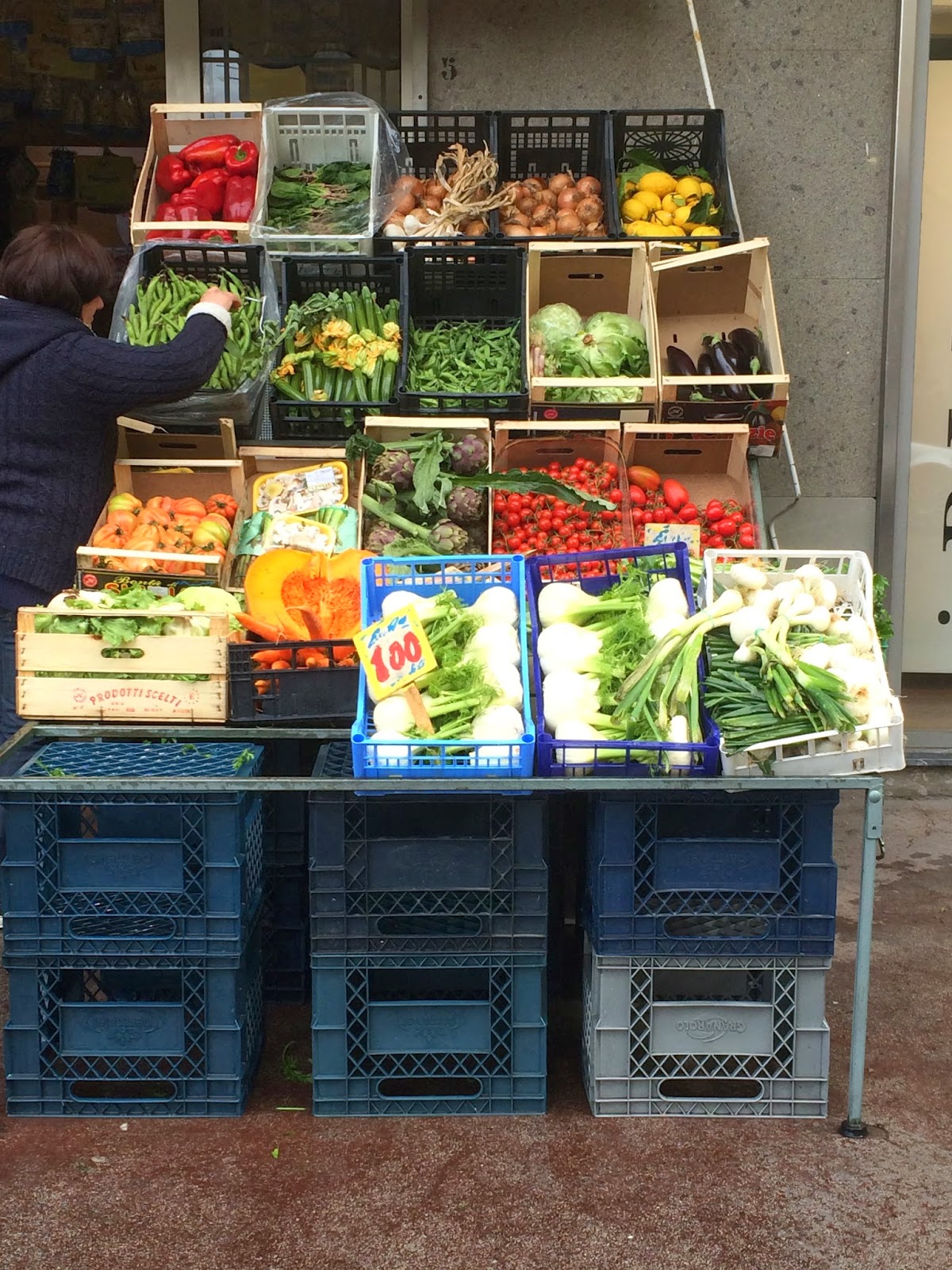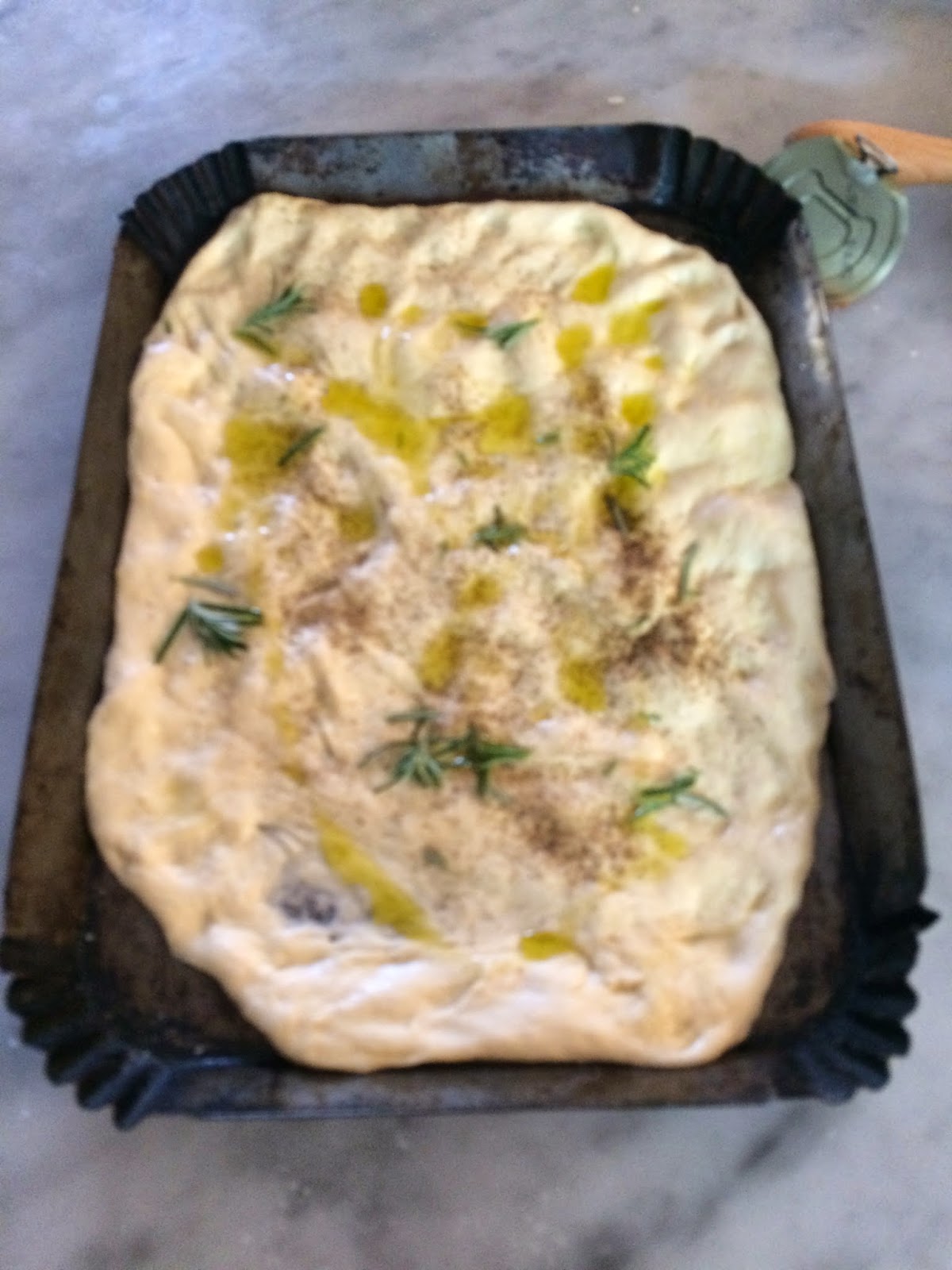Well
I’ve had an amazing two days; the sun even came out for a few hours too- which
was a bonus! I feel very lucky to be here, the family who run the school have
been so kind and generous and I haven't, even for a second, felt lonely. Biagio,
the Italian chef, is such an awesome character; he really makes the whole
experience even more magical.
What
I’ve loved about the whole thing is just how integral food is to the family
life. Mealtimes
are long, social and highly enjoyable. We cook each day and at around 7-8pm people
congregate either in the bar area, or the tables in the cookery school and we
all eat, chat and have a drink together. Not once have I ever been asked to pay
(although I have tried) for anything. You instantly feel part of the family and
although I can’t speak Italian I have felt so comfortable and at home. These
are good, honest people, willing to share all they have with you, for nothing
in return. The food is simple, homely and delicious and nothing goes to waste.
Every last scrap is used up somehow.
I
have learnt so much already, not just about pizza either, things I’m certain
I’ll never forget and wouldn’t have learnt from years reading books or watching
YouTube videos.
Day
2:
Today
we made the starter for the dough we would be using in the wood oven.
Traditional Naples pizza contains no yeast, so it takes a long time for the
dough to be ready, in fact the dough we were starting today (Tuesday) we
wouldn’t be cooking until Thursday. Good pizza takes time, Biagio told me.
Unlike the dough we had made before there was no sugar or oil in it, just
flour, cold water and salt. Which is why for hundreds of years it’s been a
staple food for Italy’s poorest people, it really is so cheap to make. It makes
you wonder how come back home we end up paying over £10 for an average, sometimes
terrible pizza, crazy really when you think about it. We mixed the starter
ingredients, flour and water along with some natural yogurt or fruit juice to
start the fermentation and production of natural yeast, then it was left at
room temperature, covered, for 24 hours.
After
this we got on with making a local specialty made at Easter time using the same
dough as we made yesterday, it is called Casatiello or Easter Pizza. I
don’t know about you but I’d swap a chocolate egg for a slice of Easter Pizza
any day, no contest. The pizza dough was rolled out to a rectangle, dotted with
pork fat then filled with a mixture of chopped meats and cheese (whatever was
leftover) and sliced hardboiled eggs. It
was then rolled up like a cigar and left to prove in a round tin before being
glazed with more egg and baked until golden. The result was an impressive
centrepiece for any Easter feast that was simple and most importantly
inexpensive to prepare. We ate it for dinner with a simple salad and a
delicious dish of homemade pasta cooked with a little garlic, parsley, olive
oil and the most delicious mushrooms. It was wonderful. After dinner a few of
us wandered into the local square for a few more drinks, where we were given
even more food (for free). It was a good job I was spending 3-4 hours a day
walking around as well as a daily morning run to burn off all this extra food!
Day
3
I
was so excited that today, finally, after years of waiting I, Lucy Nev, would
be cooking in a wood oven. It was like Christmas eve as a child, the minutes
seemed to drag by so slowly until finally it was 11.30 and we could begin. We
used the starter from yesterday to make tomorrows dough, as a rule of thumb you
use 200g of starter for every 1 kg of flour along with 20g salt and about 400-600ml
of cold water, added gradually and always by eye not amount. The dough was made
in the mixer and Biagio just knew, from years of experience, exactly how the
dough should look and when it was ready.
That
was one thing I was really learning.... to be a truly good chef, or even a
truly good pizza chef you had to understand the dough, that could only come
through constant practice and experience. The dough was then shaped into balls,
about 280-300g each, covered and left in the fridge overnight. The dough we
would use today would need to contain some yeast. Biagio explained to me the
less time you had the more yeast you would need. We had about 2 hours, so for
3kg of flour (we were making pizza for a LOT of people) we used 75g fresh
yeast, about 60g of salt and 2 litres of water. The dough was mixed, shaped
into balls and left to prove in a well floured container while we prepped up
the toppings and set off to the wood oven, which was in the orange tree filled
garden of Biagios friend, Michelangelo.
The
oven was lit and took about 1 hour for the wood to burn down to the correct
temperature, upon which it was pushed to one side and we were ready to begin. I
learn the technique for hand shaping, a lot of flour was used and the dough was
first pushed into a round using your finger tips then hand stretched. It was
then put on a pizza peel, topped with hand crushed plum tomatoes, a little
basil, mozzarella, olive oil and Parmesan. Not too much, or the pizza would be
soggy. Once gently eased into the oven it cooked in around 90 seconds. What I
tasted today was hands down the best pizza I have ever eaten, so simple yet so
delicious. A lightly charred, slightly chewy crust, sweet acidic tomatoes,
creamy mozzarella and salty Parmesan and fresh basil served piping hot straight
from the oven, with a plastic cup of Sorrento red, of course.
Biagio
told me I was a 'natural' and he couldn’t believe I’d never worked in a
pizzeria before, maybe he tells all the girls that but hey, it made my day. I
truly had had one of the best experiences of my life, as well as THE best
pizza. It had been a good day indeed, and it was still only 3pm!
Roll
on tomorrow!
Casatiello
Makes
2 big pizza pies, enough for about 8-10 slices per pie
FOR
THE DOUGH
1kg
‘0’ Canadian flour
30g
fresh yeast
2
tsp sugar
2
tsp olive oil
20g
salt
about
600ml cold water
FOR
THE FILLING:
4
hardboiled eggs
About
2-3 tbsp pork fat, lard or olive oil
Mixture
of ham, salami, Provolone, Mozzarella, Parmesan, sausages, ricotta (whatever
you have leftover) You need about 4 handfuls, 2 per pie.
1
Heat oven to high, about 180C Lightly grease two round tins with a little of
the fat. Make the dough by hand or in a mixture by combining all the dough
ingredients. Mix for about 7 minutes, or knead by hand until smooth and soft.
Leave to prove in a floured bowl covered until doubled in size, about 45
minutes.
2
Chop all the filling ingredients into small chunks.
3
When the dough is ready divide into two, shape into a rectangle by pressing
with your finger tips, now roll out using a rolling pin until about 30 x 40cm.
Dot with half the fat and scatter n half the filling and two of the eggs (peel
and slice them first, obvs). Roll up and transfer to the tin, see pic. Cover
and prove for about another 30-40 minutes. Repeat with the rest of the dough
and filling.
3
Glaze with egg then bake for 35-45 minutes, until golden, risen and hollow
sounding when tapped. Leave to cool a little on a wire rack before
serving.










































































